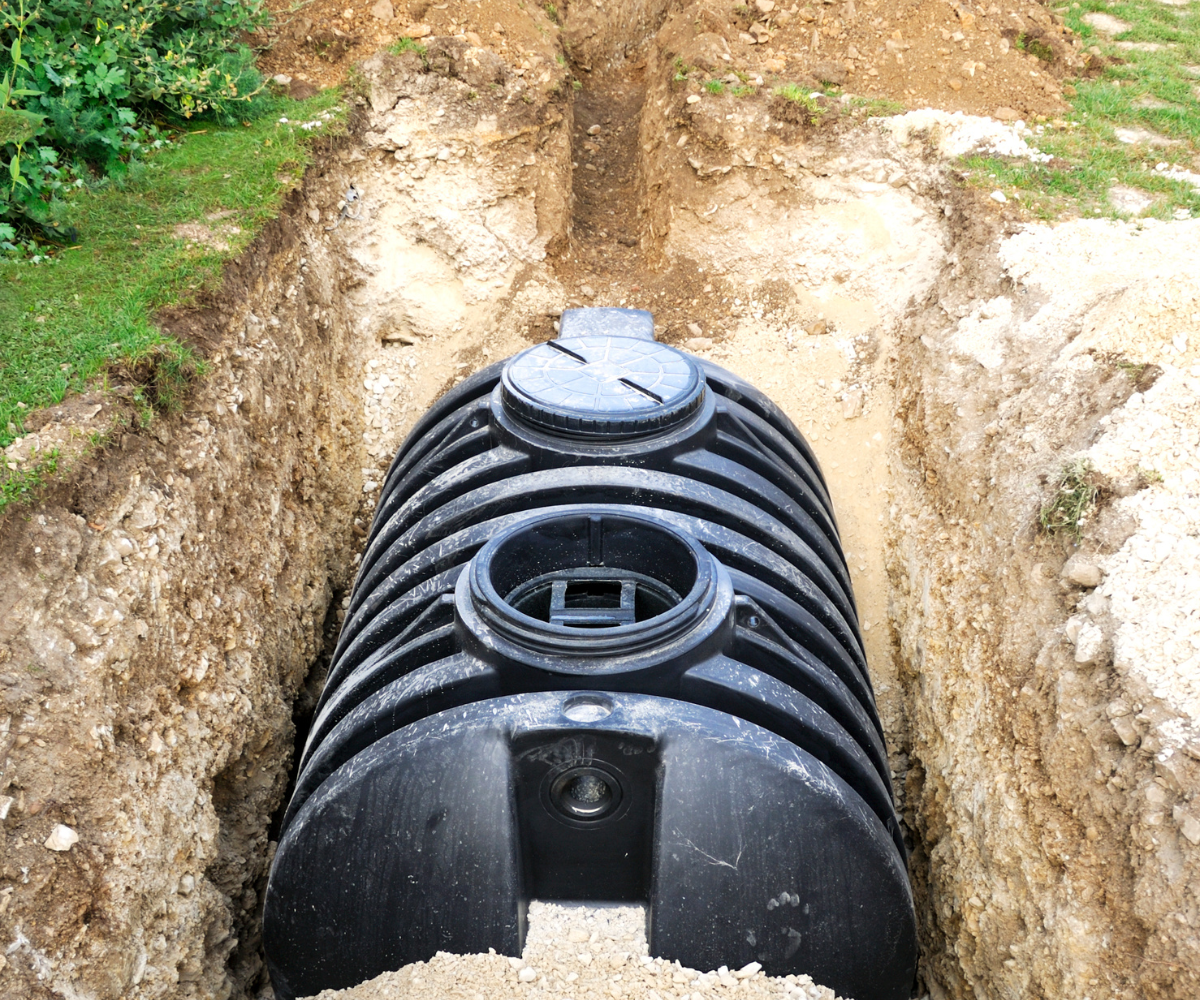What is a pit toilet?

A pit toilet is primarily a hole dug into the ground for solid and liquid human waste, sometimes covered with a toilet seat and lid.
If sufficient moisture is available, natural bacteria within the waste begin fermentation. Earthworms, amoebas, molds and other organisms in the soil as well as and flying insects entering the privy hole also consume nutrients in the waste, slowly decomposing the waste and forming a compost pile in the base of the pit.
Bacteria form a complex biofilm both on the waste and in the surrounding exposed soils around the perimeter of the pit. These bacteria feed on the human waste in the pit. Small amounts of moisture from urination are absorbed by existing decomposed waste in the base of the pit.
Pit Toilet vs. Septic Tank

The pit operates differently from a septic tank in that the pit is not normally filled with standing water. Instead, solids act as a sponge to retain moisture but are also exposed to open air, allowing insects and earthworms to feed on the waste. This would not be possible within a septic tank.
Additionally, septic tanks tend to only contain organisms that can survive in anaerobic conditions, which are conditions where oxygen is not readily available. The open pit, however, can sustain both aerobic and anaerobic organisms.
Pit Toilet vs. Vault Toilet
Unlike pit toilets, vault toilets have a large airtight underground container that is pumped out periodically. Once the vault is pumped, the waste is hauled out to municipal wastewater treatment plants.
With a pit toilet, a truck doesn't come to pump out and haul off the waste. Instead, the waste remains in the pit. The fact that there is no underground vault, and thus, no pumping involved, is the main differentiating factor between the two.
Decomposition
With pit toilets, the process of decomposition is slow due to the layering of waste materials, but it is generally effective if the input of new waste does not exceed the decomposition rate of the bacteria and other organisms.
Soil Percolation and Groundwater Pollution
Slow Rate of Percolation
In soils where the percolation rate of water through the soil is slow—and where there is not a large amount of waste entering the pit—the waste can slowly decompose and be rendered harmless without causing groundwater contamination.
Fast Rate of Percolation
In soils with a fast rate of percolation, like sandy soils, or in areas where the base of the pit penetrates topsoils and clay going directly down to underlying gravel and fractured substone, liquid waste that enters the unlined pit may quickly seep deep underground before bacteria and other organisms can remove contaminants. This leads to groundwater pollution.
Fast percolation of liquid waste out of the pit can be slowed or prevented in newly dug pit toilets by lining both the base of the pit and the walls with a layer of absorptive organic material, such as a thick mat of grass clippings. The material decomposes and becomes part of the compost pile.
Pit Toilet Designs
In most pit toilet facilities, the privy hole is covered by a small building, typically referred to as an "outhouse," with a door. The primary purpose of the outhouse is human comfort and privacy, and toilet paper may be available within the building depending on the location. However, when camping, you may want to bring your own TP just in case. Maybe some hand sanitizer too!
With a covered structure to house the toilet, the user isn't just doing their business in the woods, so they don't get wet when it's raining or cold when it's windy. However, the building serves a secondary—and possibly unintended—purpose of protecting the privy hole from large influxes of rain water. If the privy hole isn't covered, rain water will flood the hole and flush untreated waste into the underlying soils before it can decompose.
On flat or low-lying ground, the privy hole can be further protected from rain water and flood water by constructing a small raised hill or berm around the edge of the hole, using material from the hole when the pit is first excavated, to raise up the outhouse foundation. This helps falling rain and surface water to flow away from the sides of the outhouse, so it doesn't enter the pit and lead to groundwater contamination.
Rain and surface water flowing into a low-lying open pit also leads to soil erosion around the edges of the pit. This may eventually undermine the building foundation and potentially lead to the collapse of the structure into the enlarging hole.
End of Pit Life
Over a period of many years, the solid waste forms a growing pile that fills the pit. A new pit is dug somewhere nearby, and soil from the new pit is used to cover and cap off the old pit.
Underground organisms, such as earthworms, continue decomposition of the old pit until the material is indistinguishable from other ground soils.
High Volume Usage
In locations where a pit must service a large number of users, the single pit may be extended to form either a long covered trench or a series of separate pits so the waste inputs are spread out over a larger surface area. The fastest waste decomposition generally occurs in the uppermost layer of solids exposed to the air. Decomposition continues slowly in deeper layers, but relies on the diffusion of air into the solids to sustain life for the organisms within the solids.
A deeper pit may appear to provide additional capacity, but a thick layer of fresh solids deposited by many users may exceed the natural decomposition rate of the organisms in the pit. This leads to increased potential for waste seepage out of the pit. A deep pit may also penetrate upper slow-percolation surface soil layers, and allow entry of contaminated liquid waste into the underlying fast percolation subsoils.
Increasing the Rate of Decomposition
Decomposition may be accelerated by stirring or turning the pile, which breaks up the pile and introduces both air pockets and air channels into the pile to allow faster organism growth within the bed of solids. There are also commercial products, such as PORT, that add a mixture of bacteria, fungus and nitrogen to give a spurt of activity and accelerate the composting process within the pit.
What is PORT?

PORT, which stands for Portable Outdoor Restroom Treatment, is a powerful solution that provides rapid waste degradation and odor control. PORT is great for a portable toilet or an outdoor toilet!
By encapsulating the hydrogen sulfide and ammonia that cause most of the odor in toilets and adding biology that “muscles out” the odor-causing bacteria, PORT can eliminate odor in even the most horrendous-smelling pit. This keeps nasty smells from traveling away from the toilet and to the parking lot and camping areas. It also helps break down solids to accelerate the decomposition process.
To eliminate waste the natural way, science fundamentals are the solution. There are beneficial bacteria and harmful bacteria, and waste facilities deal with a lot of the harmful stuff. PORT adds good bacteria directly to wastewater—with active microbes that occur in nature—to break through the harmful microbes’ defenses, make way for oxygen and eat the solids away.
Benefits of PORT
-
Eliminates unpleasant odors rather than simply covering them up with perfumes or fragrances
-
Harmless to human, animal and marine life
-
Digests difficult compounds toxic to naturally-occurring beneficial bacteria or existing sewage bacteria
-
Breaks down difficult detergents, fats, oils, tissue and hydrocarbons with biological additives
-
Reduces corrosion resulting from leaching hydrogen sulfide
-
Non-corrosive and non-pathogenic
-
Safe to handle and store
-
Free from harsh chemicals
How PORT Works
To eliminate odors and break down solids and sludge in pit toilets, PORT leverages three core features: microbes, acids and carbon.

Microbes
The added beneficial microbes in PORT help decompose waste without harming the environment. This active, aerobic microbiology works against anaerobic bacteria in tanks to clear solids and eliminate odors. Microbes amplify conventional programs by making your inputs work harder for longer.

Acids
Organic acids and top-quality, organic carbon work to break surface tension in tanks, thus eliminating biofilm buildup. Tanks, vaults and pits can function without getting clogged or developing strong odors.

Carbon
In terms of waste management, carbon has three main functions. Carbon binds hydrogen sulfide, which eliminates odors caused by decomposing organic matter. Adding carbon to a tank, vault or pit increases the carbon to nitrogen ratio, which speeds up the composting process. Carbon feeds the microorganisms that break down solids, helping them break down faster.
Better than the Pit
Camping trip? Hike? Love camping in your RV? Folks exploring the great outdoors may come across a pit toilet as their bathroom option. But these are becoming far less ubiquitous in America’s parks than they once were. Due to environmental regulations and the improved sanitary benefits of vault toilets, pit toilets are gradually being replaced by the similar but more advanced vault.
If you love camping, treat your outdoor toilets nicely by making a point to never throw trash in them. This harms the biological process that they rely upon to break down waste and keep them smelling as good as possible.
Contact Us
To learn more about using PORT for pit toilets, contact us at support@southlandorganics.com or 800-608-3755.






